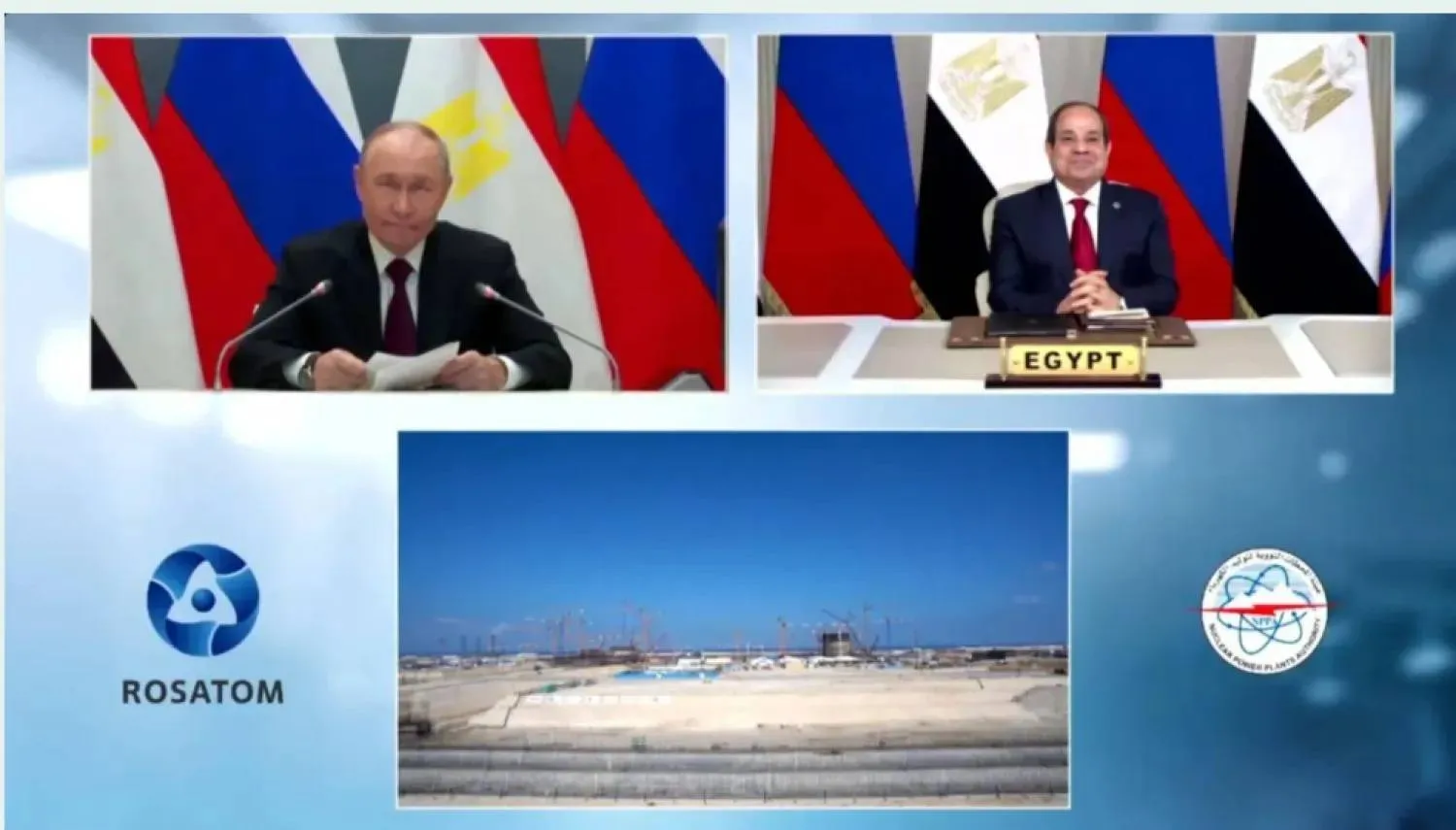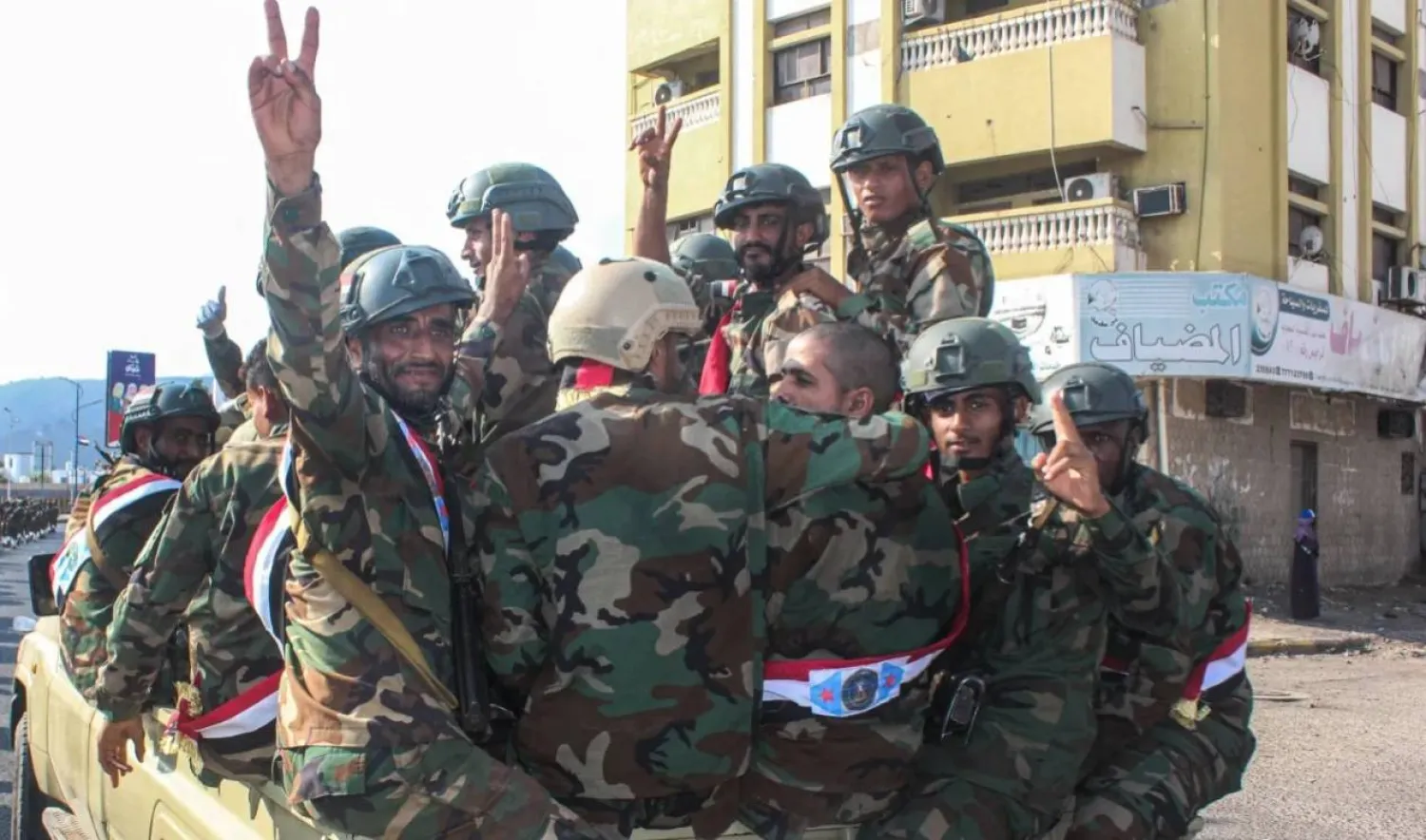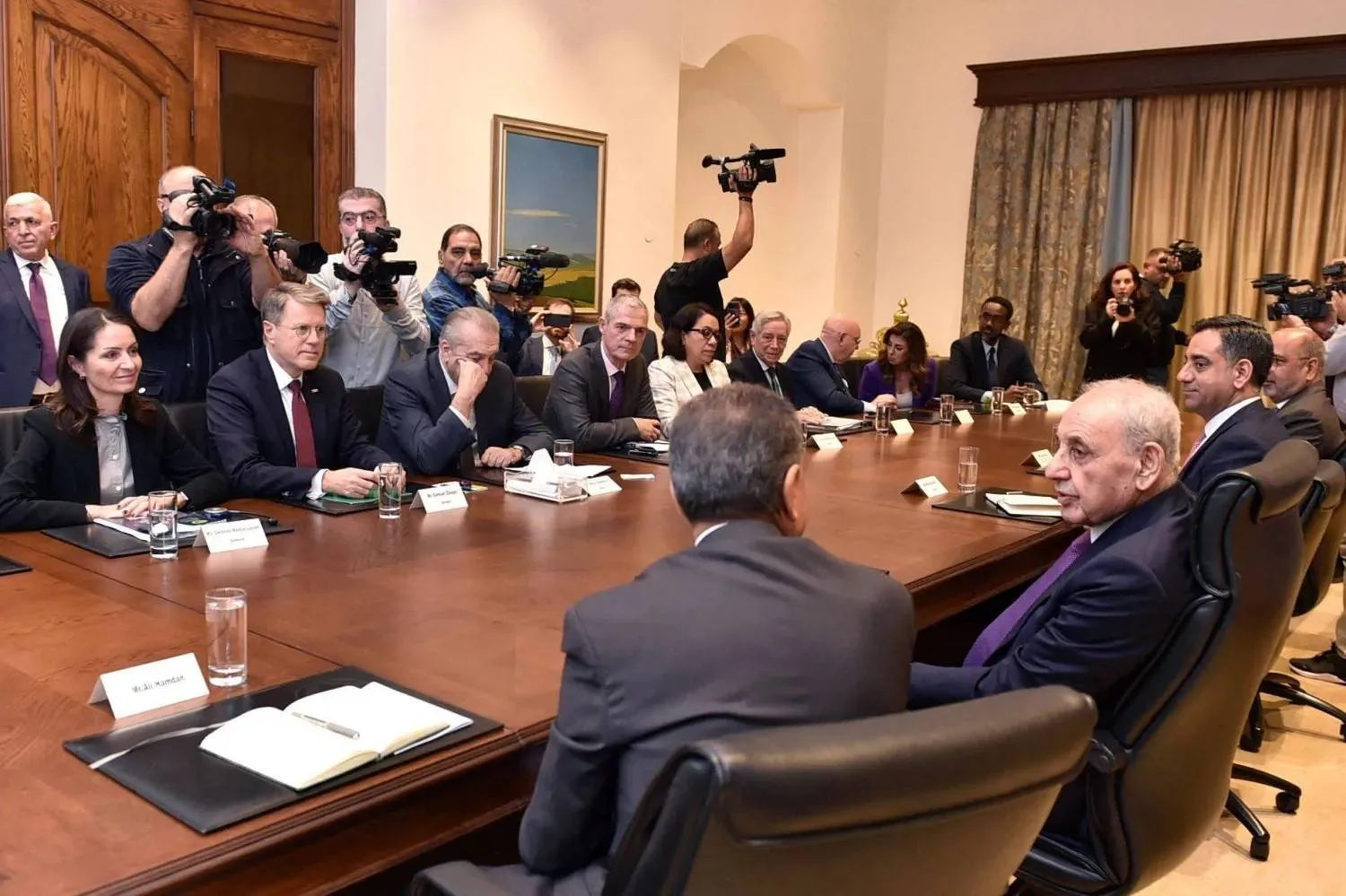Cabinet sources said Lebanon’s three top leaders remain aligned as negotiations with Israel move into a new phase, marked by the appointment of a civilian envoy, former ambassador to Washington and lawyer Simon Karam, to lead Lebanon’s delegation to the Mechanism Committee.
The move is intended to jolt the committee out of months of stagnation and push it toward a security agreement anchored in enforcing a cessation of hostilities, after earlier rounds were dominated by routine tallies of Israeli violations conducted with United Nations peacekeepers.
The sources said the leaders’ agreement to pull the Mechanism out of its deadlock coincided with drawing political boundaries for the talks.
These boundaries are strictly limited to ending Israeli violations and attacks, securing a withdrawal from the south, releasing Lebanese detainees, and revisiting and correcting border demarcation in response to Lebanon’s reservations over disputed points along the Blue Line that it considers part of its sovereign territory.
The sources told Asharq Al-Awsat that Lebanon insists on restricting the negotiations to non-negotiable security issues. It will not allow the talks to drift into discussions on normalizing relations with Israel or striking a peace agreement.
This position is shared by President Joseph Aoun, Prime Minister Nawaf Salam, and Parliament Speaker Nabih Berri, who was the first to propose adding civilians to the Mechanism.
The three leaders reiterated their stance ahead of the first round of talks, attended by US envoy Morgan Ortagus and joined by Karam, in defiance of the agenda set by Israeli Prime Minister Benjamin Netanyahu.
They said Netanyahu is trying to raise the stakes to provoke Hezbollah against the state and sow confusion, even as the Israeli army continues its violations to turn the group’s base against it.
This became evident in the targeting of several homes between the banks of the Litani River, despite containing no weapons depots.
The sources said Netanyahu is escalating militarily to force Lebanon to accept Israeli terms, although he knows the negotiations will not deviate from their technical and security framework.
Lebanon, they said, remains committed to ensuring that only the state holds weapons.
The sources noted Berri’s insistence that he was the first to propose adding civilians to the Mechanism and asked where Hezbollah Secretary-General Sheikh Naim Qassem stands on this proposal.
They asked whether he ever objected to his “older brother’s” suggestion, given that Qassem had declared in an open letter to the three leaders that he rejects negotiations with Israel.
Qassem later walked back parts of that letter by having a senior Hezbollah official convey a message that Berri was not its intended target, in an effort to prevent a rupture within the Shiite political camp.
The sources also questioned why Hezbollah objects to the talks if its “older brother” is the one negotiating on its behalf and was behind the United States mediated ceasefire agreement brokered by Amos Hochstein.
They said the only card Hezbollah has left is raising the ceiling of its objections, since it no longer has the ability to reset the negotiating table at a time when the balance of power has tilted in Israel’s favor, particularly after the group’s unilateral support for Gaza cost it its previous deterrence and rules of engagement.
The sources said Hezbollah lacks alternatives that would allow it to reverse the balance of power and is limiting itself to loud political objections that it cannot translate into military action.
This comes despite its insistence on keeping its weapons and its accusation that the Salam government committed a mistake by agreeing to the principle that arms must be exclusively in the hands of the state, beginning from north of the Litani to Lebanon’s international border with Syria, in parallel with progress in the negotiations.
They said Hezbollah is forced to calibrate its position, since it cannot afford to break with Aoun or jeopardize its alliance with Berri, a rupture that would leave the group exposed at a moment when it seeks internal protection.
Any strain in these relationships would also create negative repercussions for the Shiite community. The sources asked why the group does not place its cards in Berri’s hands, as he is better positioned to navigate Shiite public sentiment that seeks the liberation of the south and the return of its residents to their villages.
Berri is viewed, even by rivals, as the essential gatekeeper to any settlement that could restore international attention to Lebanon and open a path for reconstruction. He enjoys Arab and international ties that Hezbollah lacks, as the group remains reliant solely on Iran.
The sources said the negotiations’ entry into a new phase prompted United States pressure on Israel to prevent the war from expanding, after Lebanon agreed to Washington’s request to add a civilian to the Mechanism and task him with leading the delegation.
They urged Hezbollah to stand behind the state’s diplomatic choice and said the group’s fears that the talks could lead to a peace treaty with Israel are unfounded.
They noted that Berri himself was the first to support bringing civilians into the process, which should reassure Hezbollah and encourage it to give diplomacy a chance.
They added that Salam is not acting unilaterally and is coordinating with Aoun. Both leaders are working together to implement the government’s commitment to ensuring that only the state holds weapons.
They also revealed that communication between Aoun and Berri has not stopped. The two men reviewed the atmosphere surrounding the Mechanism’s meeting in Naqoura before the latest cabinet session.
According to the sources, Berri instructed his parliamentary bloc and senior Amal Movement members not to comment on the negotiations, positively or negatively.
The directive came because he wants to centralize the political message and avoid dragging party members on both sides into disputes that could spill into the streets.
Hezbollah, they said, also wants to protect its relationship with its sole remaining ally in Lebanon after its former partners in the so-called Axis of Resistance endorsed the principle of exclusive state authority over weapons.
The sources said Hezbollah knows that avenues for repairing its Arab and international relations remain closed, unlike Berri who maintains wide ties.
They questioned what Hezbollah is counting on after its leadership rejected Egypt’s initiative, insisting, according to Western diplomatic sources cited by Asharq Al-Awsat, on linking its position to US-Iran negotiations in hopes of safeguarding Iran’s leverage in Lebanon after regional setbacks for the Axis.
They said the government will take note of Hezbollah’s objection, although it will have no impact on the course of the talks.
Hezbollah will not mobilize its supporters in the streets to avoid friction with Amal, particularly since Berri does not oppose the launch of negotiations, which remain tied to liberating the south and implementing Resolution 1701.
Any attempt by Hezbollah to outbid Berri for populist gain would backfire and weaken the group’s standing within its own community.









